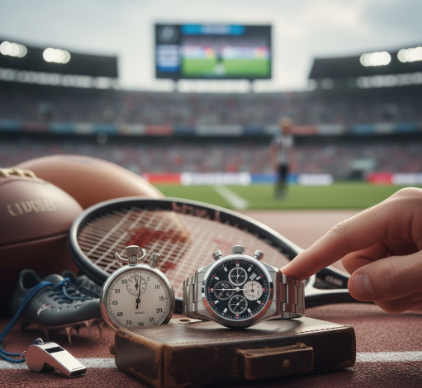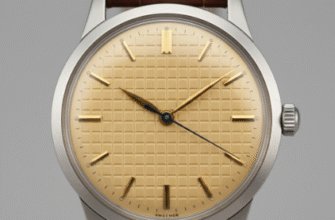The glint of a luxury watch on a champion’s wrist as they hoist a trophy is now a familiar sight. It’s a moment that feels entirely natural, the perfect marriage of peak performance and precision engineering. But this relationship between the world of horology and professional sports isn’t just a modern marketing gimmick; it’s a deep, complex bond forged over a century, evolving from a practical necessity into a multi-billion dollar symbiotic partnership. It’s a story of how the simple act of measuring time became intertwined with defining and celebrating the very pinnacle of human achievement.
From Finish Line to Wrist: The Genesis of a Partnership
In the early days of competitive sports, accurate timekeeping was a monumental challenge. Before digital displays and transponders, the difference between winning and losing came down to the steady hand and sharp eye of a timekeeper wielding a mechanical stopwatch. Sports like motorsport, horse racing, and track and field were desperate for reliable, precise instruments. This is where the Swiss watch industry first entered the arena, not as a sponsor, but as an
essential service provider.
Companies like Heuer (which would later become TAG Heuer) made their name by developing chronographs that could accurately measure fractions of a second. They weren’t just accessories; they were critical tools. The dashboard of a 1960s race car wasn’t complete without a set of Heuer timers. Omega became the official timekeeper for the Olympic Games as early as 1932, a role it still holds today, underscoring the trust placed in its mechanical prowess. These early collaborations were born out of a genuine need for innovation, with sports pushing the boundaries of what was mechanically possible in timekeeping.
The Ambassador and the Icon: Crafting a Narrative of Success
The transition from tool provider to high-profile sponsor began to accelerate in the latter half of the 20th century, particularly with the rise of television. Suddenly, athletes were not just competitors; they were global icons. And what they wore, on and off the field, became a powerful statement. Watch brands quickly realized that associating their product with a winner was
marketing gold.
Motorsport: The Natural Fit
No sport is more obsessed with time than motorsport. The connection was natural and immediate. The Rolex Daytona, now one of the most sought-after watches in the world, is inextricably linked to the Daytona International Speedway. Rolex became the official timekeeper in 1962, and the watch became the prize for the winners. This wasn’t just a sponsorship; it was the creation of a legend. The watch symbolized speed, endurance, and victory. Similarly, TAG Heuer’s bond with Formula 1, personified by legends like Steve McQueen sporting a Monaco in the film “Le Mans,” cemented the brand’s image as cool, daring, and precise.
The partnership between Rolex and motorsport is one of the oldest and most profound in the industry. Rolex has been the Title Sponsor of the Rolex 24 At DAYTONA race since 1992. This long-standing relationship has helped solidify the Daytona chronograph as a true icon, forever linked to the world of endurance racing and the pursuit of excellence against the clock.
Tennis and Golf: The Gentleman’s Game
In sports like tennis and golf, the watch isn’t used during play. Instead, its role is purely symbolic. The strategy shifted to the concept of the
brand ambassador. Rolex masterfully pioneered this with Arnold Palmer in 1967, creating a partnership that lasted over 50 years. The idea was simple: associate the brand’s elegance and prestige with the sport’s greatest gentlemen. Today, this model is ubiquitous. Roger Federer, a paradigm of grace and dominance, lifts his Wimbledon trophies wearing a Rolex. Rafael Nadal actually wears his multi-million dollar Richard Mille watch during his incredibly physical matches, a testament to the watch’s extreme engineering and shock resistance. The watch is no longer just telling time; it’s telling a story of success, resilience, and class.
A Mutually Beneficial Relationship
The benefits of these partnerships flow in both directions, creating a powerful feedback loop. For the watch brands, sports provide a global stage to showcase their products in a context of passion, precision, and peak performance. They aren’t just selling a device that tells time; they are selling an identity. The consumer buys a piece of the champion’s legacy. It’s an emotional purchase, an
aspiration to be associated with the qualities embodied by the athlete or the event.
For the sports world, the influx of capital from watch sponsorships is transformative. This money funds everything from technological development in F1 cars to prize money at tennis Grand Slams and the operational costs of major sailing regattas. Beyond the financial aspect, the association with luxury brands elevates the sport’s own brand, lending it an air of sophistication and prestige that attracts a wealthier demographic of fans and further corporate interest.
The arrival of the smartwatch has introduced a new dynamic to this long-standing relationship. While luxury mechanical watches sell a narrative of heritage and success, smartwatches from brands like Apple, Garmin, and Suunto offer something different:
data. For the modern professional athlete, and indeed the serious amateur, these devices are indispensable tools for training and performance analysis. They track heart rate, GPS location, VO2 max, sleep patterns, and a host of other metrics.
This brings the relationship full circle, back to the watch as a functional tool for sport. However, the focus has shifted from measuring the event’s time to measuring the athlete’s body. It presents a challenge to traditional watchmakers. Some, like TAG Heuer, have embraced this by launching their own luxury smartwatches, attempting to blend Swiss watchmaking heritage with cutting-edge technology. Others have doubled down on their identity as makers of timeless, mechanical art, positioning themselves as the ultimate symbol of celebration
after the work is done. The two worlds currently coexist, one focused on the grit of training and the other on the glory of victory.
Ultimately, the bond between watches and sports remains as strong as ever because they share a fundamental obsession: the measurement and mastery of time. Whether it’s the fraction of a second that separates first from second place, the years of dedication required to become a champion, or the timeless legacy of a legendary career, time is the ultimate arbiter. As long as that remains true, there will be a watch on the wrist of the one who conquers it.









